TIME TRAVEL DESTINATION IN MIE PREFECTURE
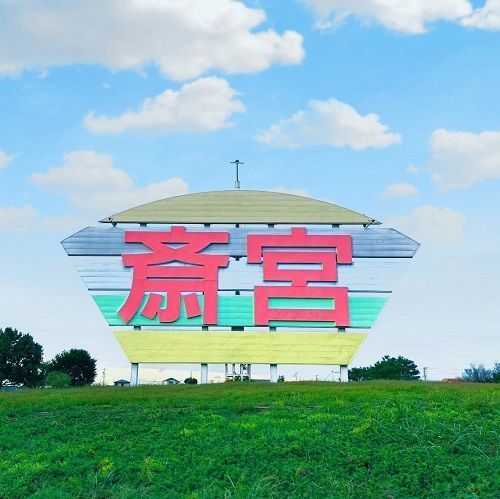
Saiku in Meiwa Town, Mie Prefecture,is a place that most foreigners don’t know about but plays an importance role in Japan’s history. After learning its history the way I saw it changed completely.
My name is Isis Akemi Muto, from Sao Paulo, Brazil. I’ve been living in Mie Prefecture, Japan, for the past 22 years. Although I have been living in Mie for a long time, I’m ashamed to say that I don’t know much about the prefecture I live in.So, recently, my husband and I started doing some day-trips around Mie.
This time, we went to "Saiku" in Meiwacho.
When we think about historical places in Japan, probably Tokyo, Kyoto and Nara come to people’s mind, but Ise Grand Shrine, the country’s holiest Shinto shrine, is also well known and it’s one of the most famous tourist spots in Mie Prefecture. Today, however, we went to a place most foreigners don’t know about but is equally important in Japan’s history. This place is called Saiku.
Saiku is located in Meiwa Town, Mie prefecture. Ironically, I live just a 30 minute drive from Meiwa, but I had never heard about this historical place before.
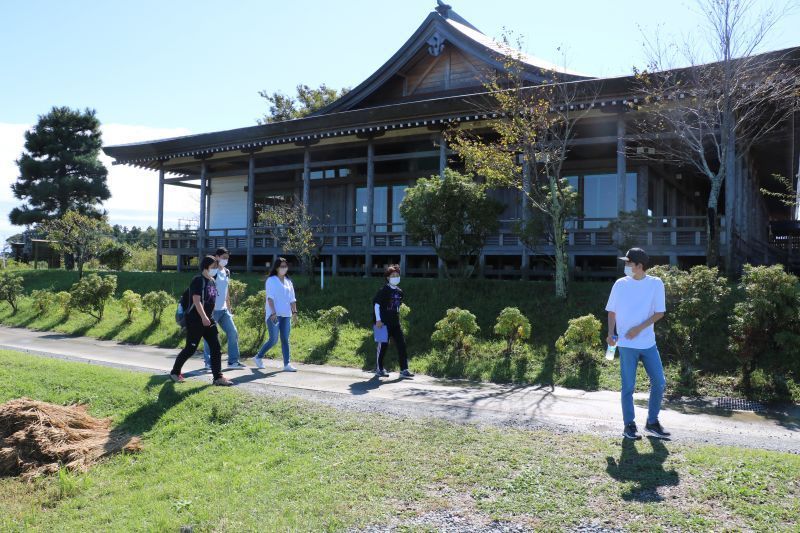
(Caption: We started walking through the Saiku Ruins)
Today’s program was to go around Saiku to learn about its history and explore its surroundings. We did a quick health checkup which is part of the procedure when you get a tour guide program. Our guides for the day were 2 lovely ladies, Mrs. Sawamura and Mrs. Okano.
Saiku is one of those places that seems random, until you start learning about its history. After learning its history the way I saw it changed completely. Saiku is located about north-west of Ise Grand Shrine, and from the 7th century to the 14th century, it was Saioh’s residence. Saioh was an unmarried female member of the Imperial Family who was sent by the emperor to live in Saiku to serve AmaterasuOmikami.
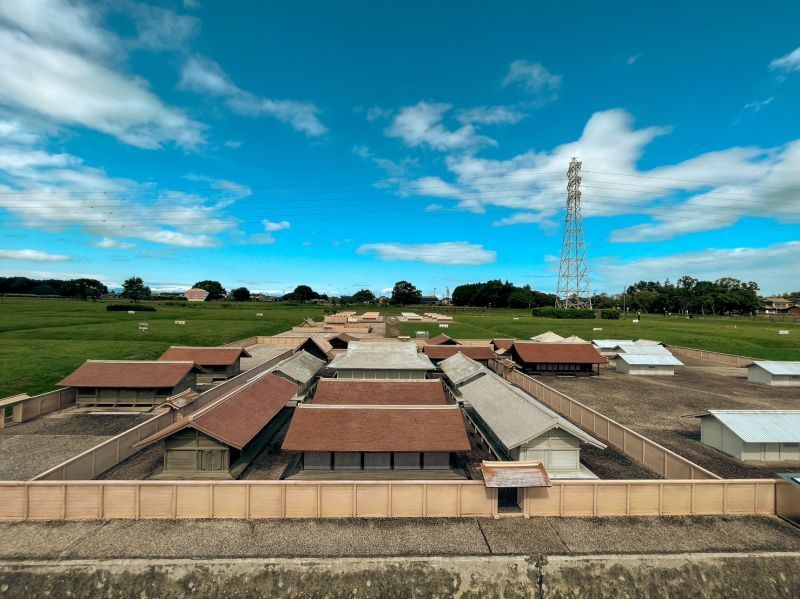
(Caption: 1/10 model of Saiku Ruins)
The 1:10 scale model of how Saiku looked 1,000 years ago.
The architecture of the ancient town looked simple but still full of details of its history.
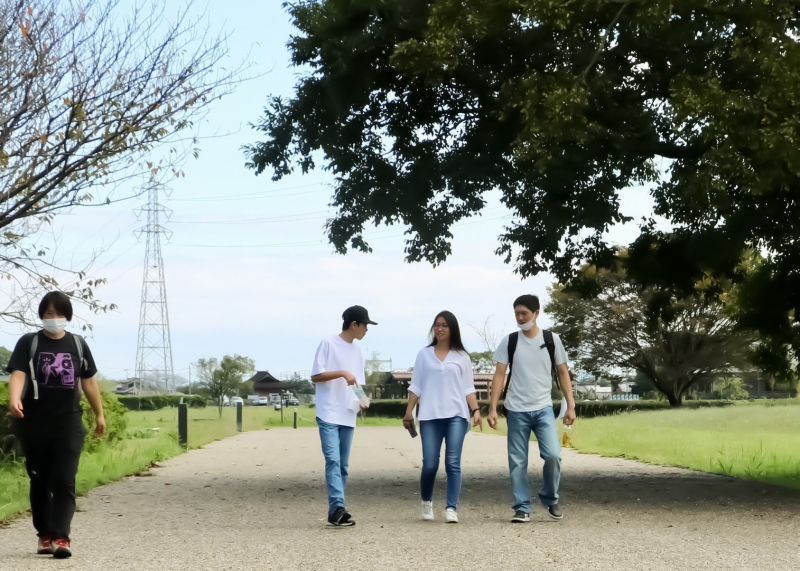
(Caption:Theancient Ise Road)
We continued exploring the historical site walking through the same path which the chosen Saioh and her retinue of approximately 500 people passed to get to Saiku.According to our guides, once the Saioh was chosen, she would start her journey from Kyoto to Saiku that lasted 6 days and 5 nights, and she would remain in Saiku until she was called back to Kyoto, we also learned that the chosen Saioh was usually young, the youngest being only 2 years old!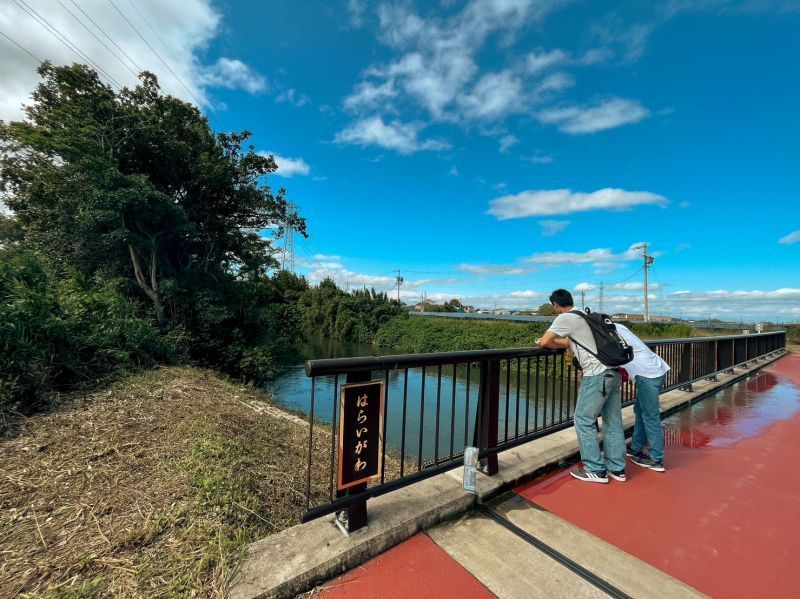
(Caption:The pathway to Harai river&Jigu bridge)
We were amazed by the wide open green area while walking the pathway.
We were told by our guides that t Saioh purified herself in Harai river before finally heading to Saiku.It was a lot of fun to spend time walking healthy while thinking about Saio in the beautiful air and nature.
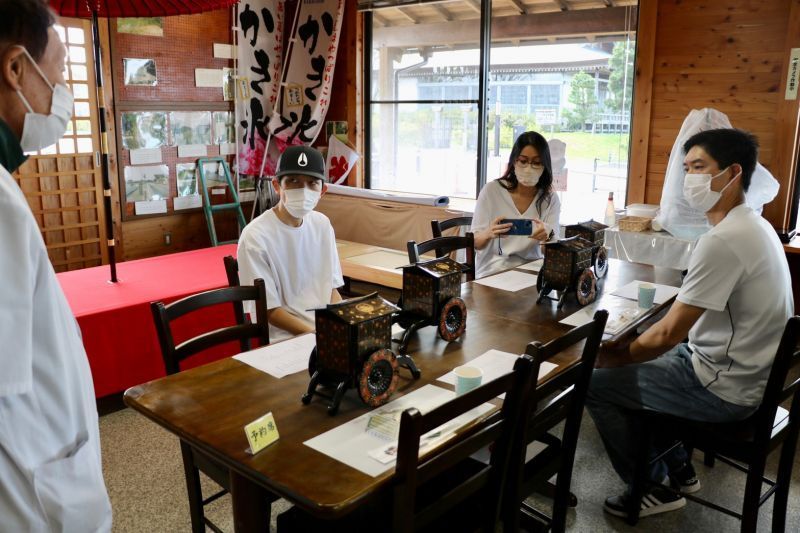
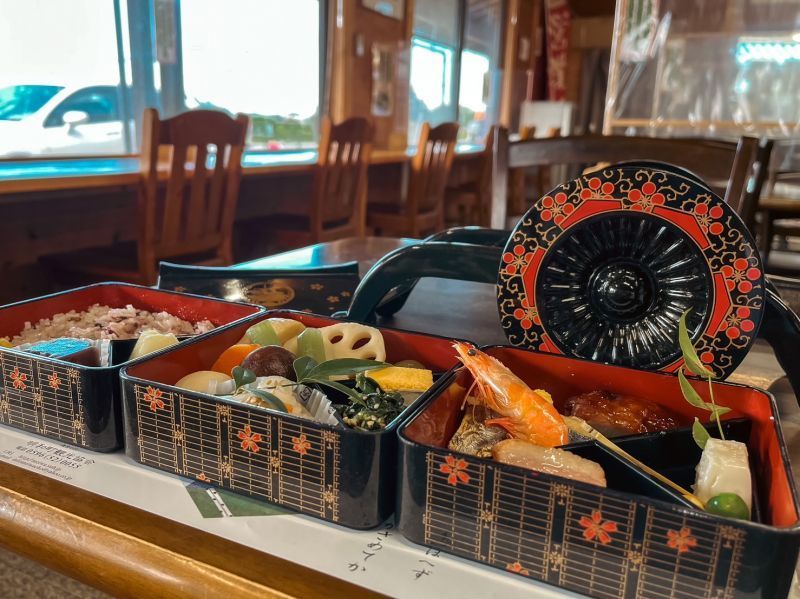
For lunch, we had the chance to eat Saioh’s treasure box( lunch box).
This bento was restored by the Meiwa Town Tourism Association under the guidance of the Saiku History Museum to remind us of the eating habits of those days.
The chef who made the bento assured us that we were going to have 3 surprises. The 1st surprise is when we look at the lunch box, the 2nd is when we open it and the 3rd, is when we taste it. And when we ate,we felt he was right
Everything was delicious! Especially the “umeboshi”, the Japanese plum. Japanese plums are usually red and sour but the one that we ate had a light color, and as soon as I put it in my mouth, I was prepared to make a sour face but instead, I was shocked because it was sweet, it was the first time in my life that I had eaten a sweet umeboshi, it had a slight taste of honey. Delicious! Another surprise was the black rice, “kuromai”, and what makes it special is that the seed used to prepare today’s rice come from Ise shrine. Honestly, I’m not a fan of “kuromai” but knowing that this rice is not the usual rice we eat, and that its seed come from a holy land, I ate it with pleasure, and it was delicious, in fact, everything was exquisite!
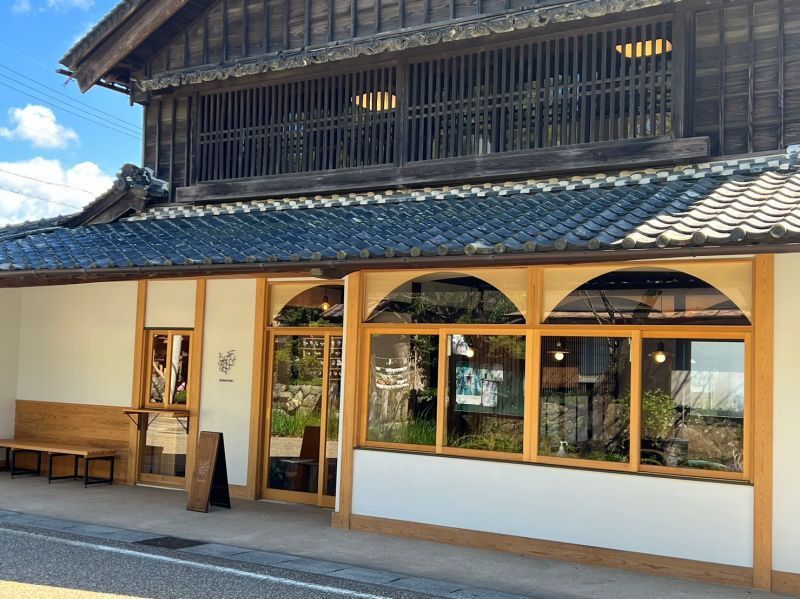
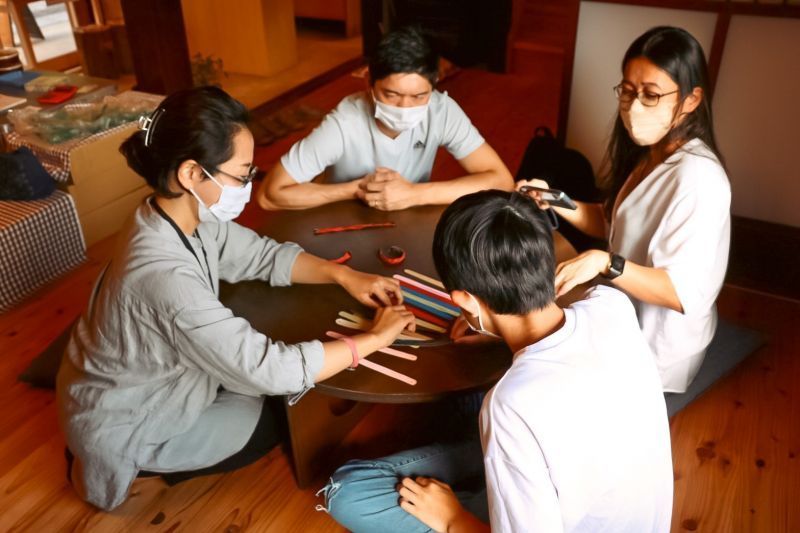
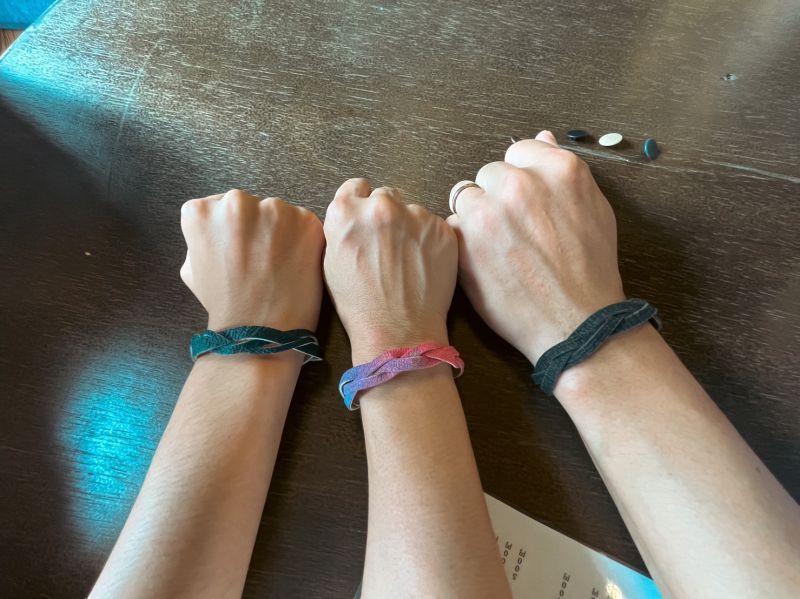
(Caption:Workshop at Minoriya Café)
After lunch, we walked to Minoriya. Minoriya is a charming cafe right across from Take Jinja (or Bamboo Shrine) where we had our first “gikakushi” workshop. “Gikakushi” is literally paper imitating leather. To get to the point that the material is strong enough to be used so it will not fade, tear and it is durable, this material goes through a long process, once the process is finished, it can be used to make book covers, wallets, bracelets and even bags. Today, we made bracelets for ourselves.
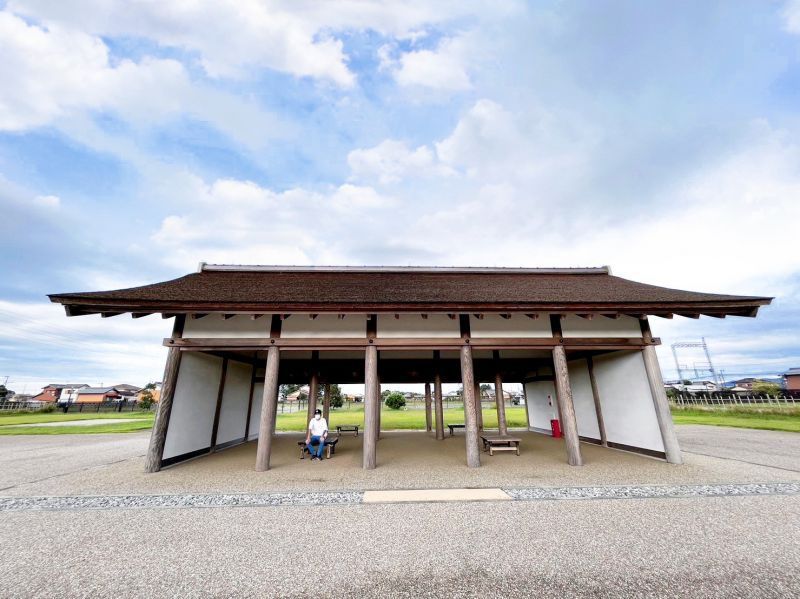
(Caption:Saiku Heian no Mori)
Back to the historical site, we did a quick check to the 3 restored structures of Heian period. We learned that the roof was made of many layers of tree bark, the structures were for sure really impressive.
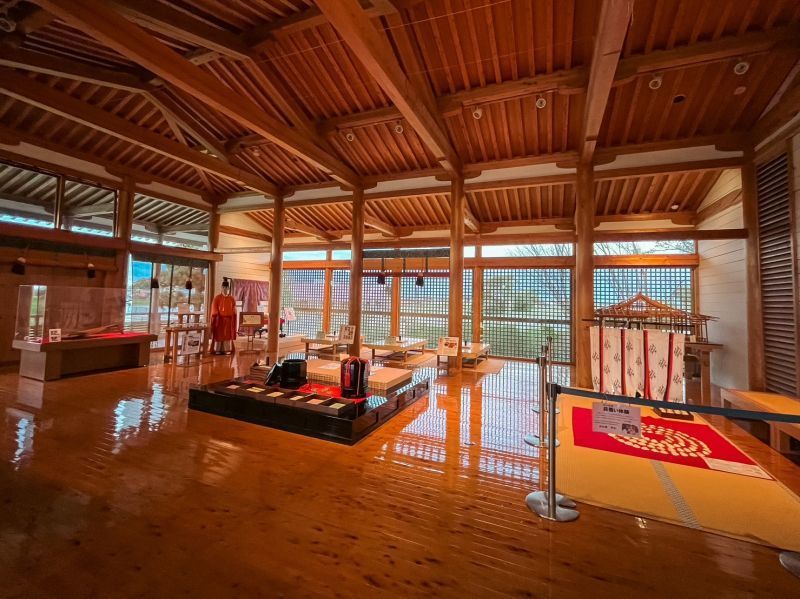
(Caption:Itsukinomiya Hall for Historical Experience)
At Itsukinomiya hall, you can experience the activities from the Heian period. Some activities you can do for free, but others must be booked beforehand, and you must pay a fee.
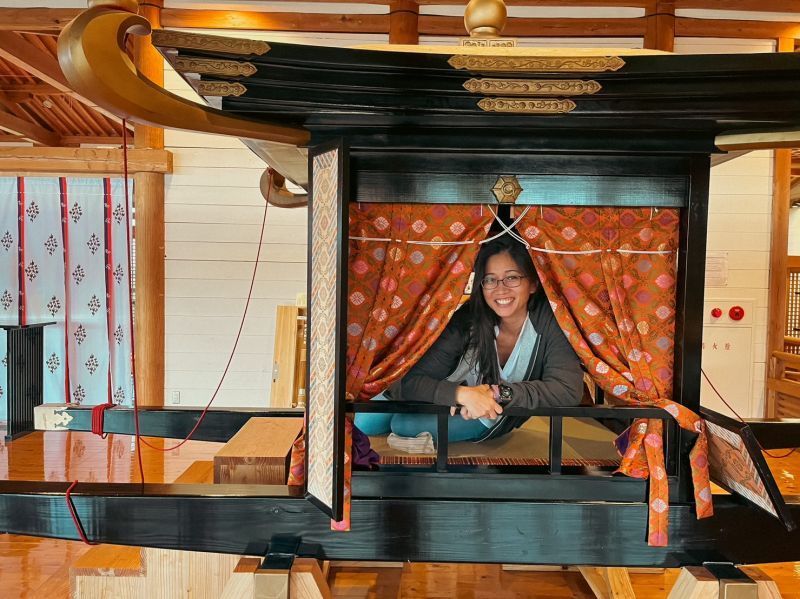
I got inside the palanquin named”KOSHI” that carried Saioh from Kyoto to Saiku.
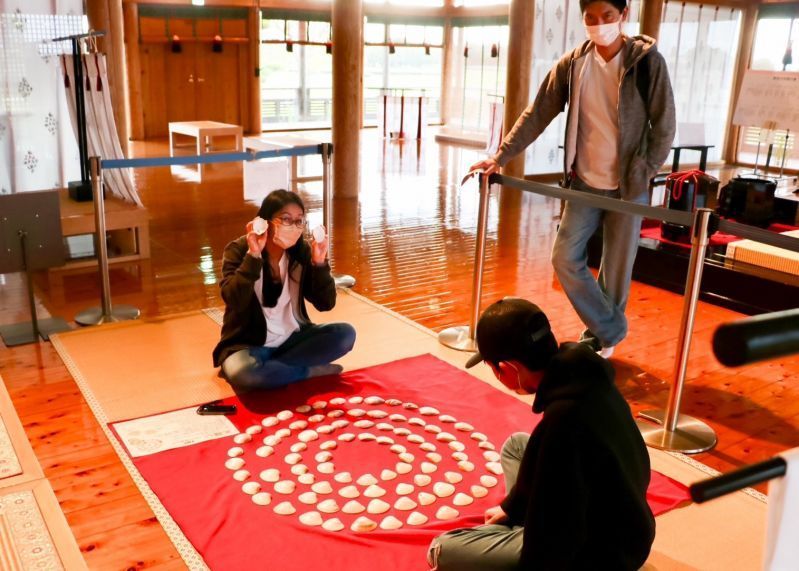
(Caption:You can play Kai-ooi games)
“Kai-ooi”, Heian period shell-matching game, is like playing a card game. The players need to find the side that matches the shell placed in the center. I was surprisingly good at this game.
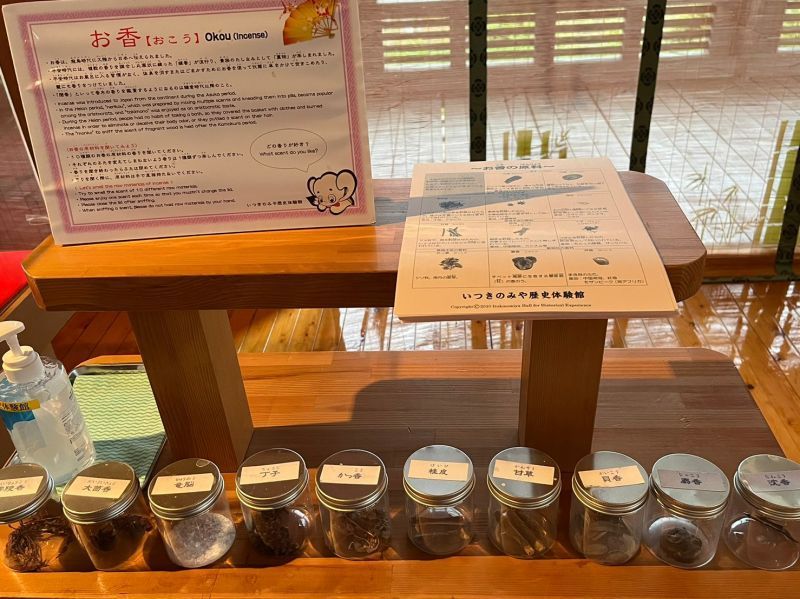
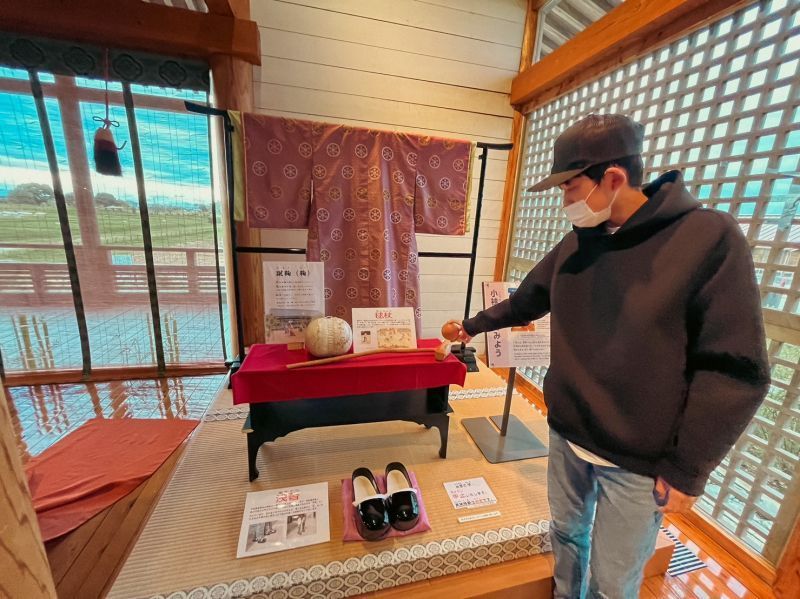
(Caption:You can learn about life in those days through exhibits.)
You will also have a chance to sniff some of scents they used to eliminate or at least deceive their body odor since back then, they didn’t have the habit to take a bath.In addition, you can see items used in daily life, such as the clothes of the time and the tools used in the kemari activity.
One of the great things about Saiku is that you not only earn about its history at the museum, but you can also experience some of the things you learned, at this amazing hall of historical experience.
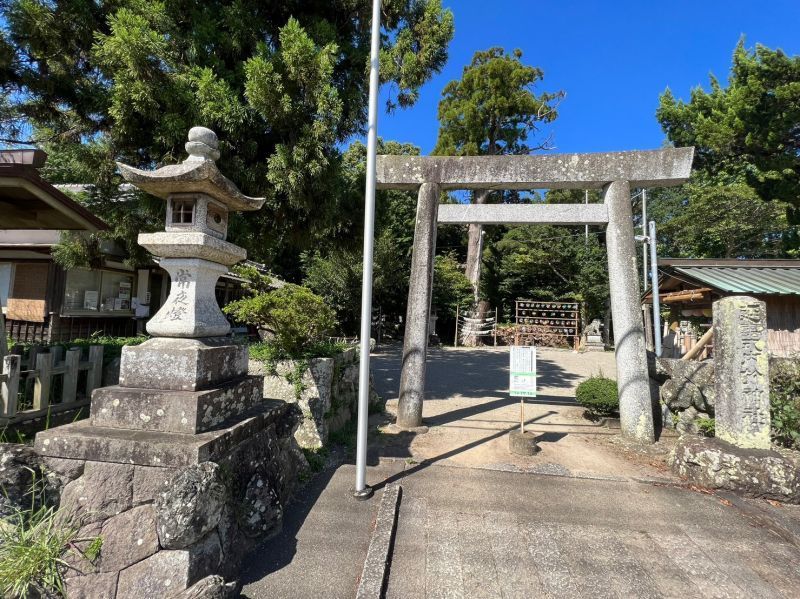
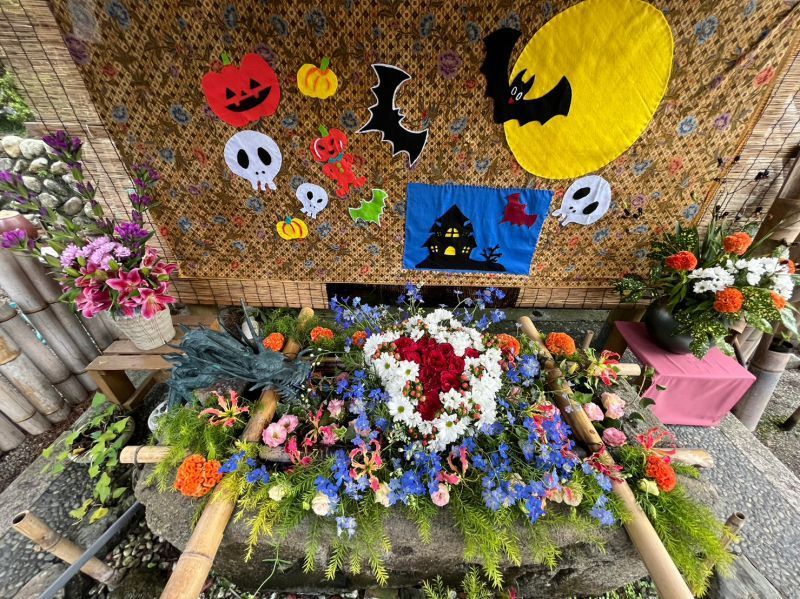
Flower arrangement at Take Jinja
At the end of our day, we went back to Take Jinja. Every shrine has a “chozusha” which is a hand water basin where we wash our hands before visiting a Shinto shrine, but because of the Coronavirus Pandemic, many of these basins are now decorated just like the one at Take Jinja, with a beautiful flower arrangement, plants, bamboos, and that day, an additional Halloween decoration.
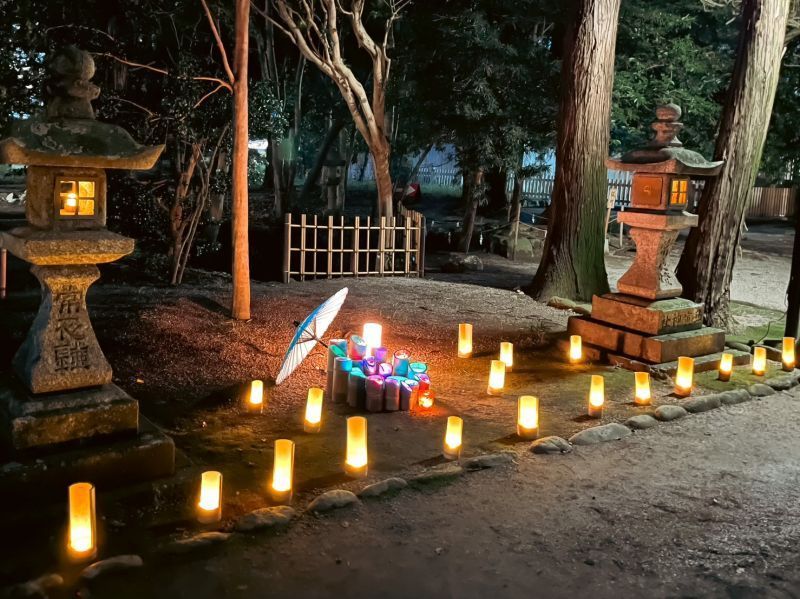
At Take Jinja, there is an event called the Full Moon festival which is held every month, and luckily, the day we went to Meiwa Town was a full moon day, so we had the opportunity to be part of the festival. Local residents volunteer to decorate bamboos with flowers and make other kinds of decoration. At night, they light up these bamboos and place them along the pathway to the shrine.
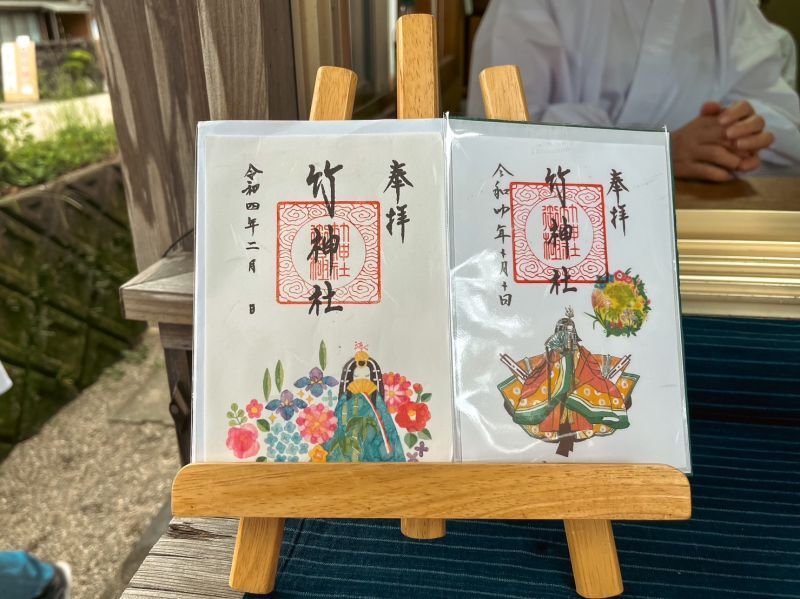
Many people that come to the full moon festival, also get the Goshuin. Goshuin is basically a proof that you have visited a temple or a shrine. It contains the each original stamp and the name of the shrine and the month you visited. So many people collect it. Every month the drawing is different. I think I will also start collecting it as well.